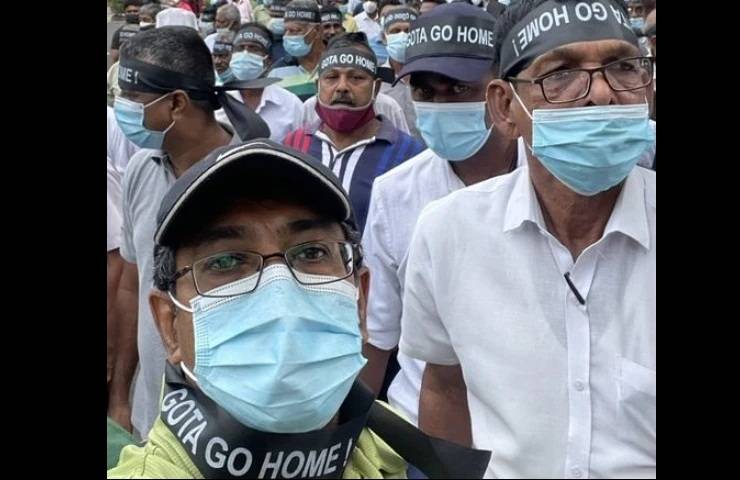Amid growing public protest a number of ruling coalition parties had insisted to dissolve the cabinet and form an interim government with the consent of all parties, including the opposition….reports SUSITHA FERNANDO
With increasing street protests demanding Sri Lankan Prime Minister Mahinda Rajapaksa’s government to step down, the country’s Cabinet of Ministers except Rajapaksa have resigned.
Following a meeting with the Prime Minister, all the Cabinet ministers have submitted their letters of resignation to him on Sunday evening.
“We discussed about current issues of the country with the Prime Minister and we handed over letters of resignation,” Dinesh Gunawardena told the media after handing over his ministerial portfolio.
Gunawardena said the Sri Lankan President Gotabaya Rajapaksa and the Prime Minister are scheduled to meet on Monday morning and decide the future of the government. However, the decisions on resignations of the state ministers were not finalised.
Amid growing public protest a number of ruling coalition parties had insisted to dissolve the cabinet and form an interim government with the consent of all parties, including the opposition.

Earlier on Sunday Mahinda Rajapaksa’s son Namal Rajapaksa, who was the country’s Sports Minister, had tendered his resignation and had left the country with his family.
Defying the curfew Sri Lankans took to heavily guarded streets on Sunday and urged the Rajapaksa government to resign. President Gotabaya Rajapaksa tried to stop the apolitical protests organised by people representing all parties.
He imposed emergency law and curfew and in a desperate bid to prevent the protests, blocked all social media platform from Sunday early morning.
However, Namal Rajapaksa criticised his uncle Gotabaya’s decision to ban social media.
Dollar crunch mainly due to foreign borrowings for mostly white elephant projects led Sri Lanka to a major economic downfall.
The country was forced to urge for financial assistance from neighbouring countries mainly to supply essentials like fuel, power, liquified petroleum gas and food.
For months people have been queuing for fuel and liquified petroleum gas while undergoing 13-hour power cuts as there was no fuel to run the power plants.
From January, India has provided more than $2.5 billion financial facilities to buy essential items and provided four credit lines to purchase fuel so far to restore power generation.

